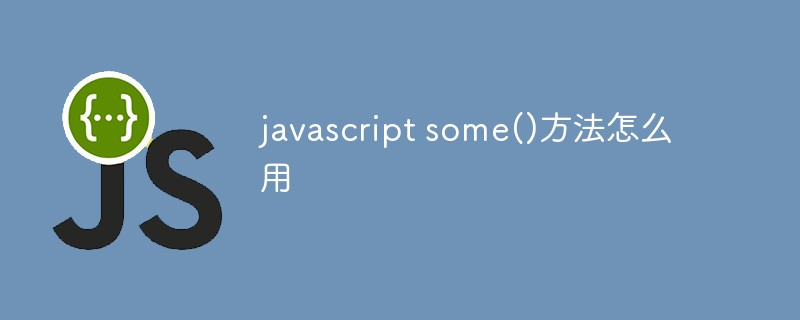Home >Web Front-end >JS Tutorial >How to use javascript some() method
How to use javascript some() method
- 青灯夜游Original
- 2021-07-20 17:28:3224937browse
Usage of the javascript some() method: 1. Check whether there are elements in the array that meet the specified conditions. If it exists, it will return true, if it does not exist, it will return false; 2. Check whether all the elements in the array do not meet the requirements. If the specified conditions are not met, false will be returned, and if one or more conditions are met, true will be returned.

The operating environment of this tutorial: windows7 system, javascript version 1.8.5, Dell G3 computer.
some() method: Check whether the elements in the array meet the specified conditions (provided by the function).
In JavaScript, the some() method is used to detect whether there is an element in the array that meets the specified conditions. If it exists, it returns true, if it does not exist, it returns false. Thinking about it from another angle, some() can also be used to detect whether all elements in the array do not meet the specified conditions. If they do not meet the specified conditions, it will return false. If one or more elements match, it will return true.
Similar to the some() method, there is the every() method. The difference between them is: as long as one element in the array meets the condition, some() returns true; only if all elements in the array Every() only returns true when all elements meet the conditions.
Note:
some() will not detect empty arrays.
some() does not change the original array.
some() specific usage is as follows:
array.some(callbackfn[, thisArg]);
Parameter description:
array: required Parameters, an array object.
-
callbackfn: required parameter, a function that receives up to three parameters. Function parameters:
Parameter Description currentValue must. The value of the current element index is optional. The index value of the current element arr is optional. The array object that the current element belongs to #some() method calls the callbackfn function for each element in the array until callbackfn returns true, or until the end of the array is reached.
thisArg: Optional parameter, an object that can refer to the this keyword in the callbackfn function. If thisArg is omitted, undefined will be used to return false.
The song() method calls the callbackfn function on each array element in ascending index order until the callbackfn function returns true. The some() method returns true immediately if an element is found that causes callbackfn to return true. If the callback does not return true for any element, the some() method returns false.
The some() method does not call this callback function for missing elements in the array. In addition to array objects, the some() method can be used by any object that has a length property and has a numerically indexed property name, such as associative arrays, Arguments, and so on.
Example
The following example detects whether the value of an element in an array is an odd number. If the some() method detects an even number, it returns true and prompts that it is not all odd; if no even number is detected, it prompts that all are odd.
function f(value, index, ar) {
if (value % 2 == 0) {
return true;
}
}
var a = [1,15,4,10,11,22];
var evens = a.some(f);
if (evens) {
console.log("不全是奇数。");
} else {
console.log("全是奇数。");
}[Recommended learning: javascript advanced tutorial]
The above is the detailed content of How to use javascript some() method. For more information, please follow other related articles on the PHP Chinese website!
Related articles
See more- How to understand the javascript prototype chain
- How to determine whether a node exists in JavaScript
- How to exit a loop in javascript
- How to set the value of the input value attribute in javascript
- What are the methods for intercepting strings in javascript?
- There are several types of JavaScript variables

